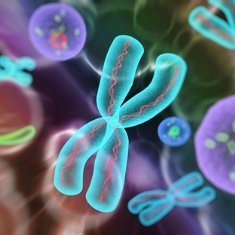Small molecules for genome editing

Genome editing involves making targeted modifications to the genome (e.g. the deletion, insertion or modification of DNA sequences of cells or organisms). This exciting area of research holds great potential for applications across life science, biotechnology and medicine. Small molecule compounds play a crucial role in these techniques.
View all low-cost gene-editing products
Cre-LoxP / CreER
Cre-LoxP recombination is a site-specific recombination technique which uses the Cre recombinase to catalyse recombination between two recognition sites (LoxP) found in the exon of a gene of interest. This allows the control of gene expression by the excision or inversion of DNA segments which are flanked by these LoxP sites.
The subsequent fusing of Cre with a mutated ligand-binding domain (LBD) of the estrogen receptor created the CreER system in which CreER can be selectively activated by the synthetic estrogen receptor ligand 4-hydroxytamoxifen (4-OHT). This inducible system allows external temporal control of gene expression in vivo.
CRISPR/Cas9
In addition to other targeted gene editing techniques, the CRISPR/Cas9 system has been a major breakthrough in genome engineering and is used for editing, regulating and targeting genomes.
CRISPR/Cas9 is a RNA-guided system in which the Cas9 nuclease is guided to a target sequence by a synthetic guide RNA (sgRNA). It then cleaves the DNA to form a double-stranded break (DSB). This allows a cell’s genome to be cut at desired location thus allowing existing genes to be deleted and/or new genes added. Host cells repair DSBs by non-homologous end joining (NHEJ) or homology-directed repair (HDR):
- NHEJ can be imprecise, leading to insertions or deletions with unpredictable outcomes.
- HDR is the preferred mode of repair, as it allows more precise targeting to modify exact DNA sequences, but this pathway is utilised less by cells.
Small molecules can induce genome editing techniques and enhance efficiency and precision of CRISPR/Cas-9
Since the development of inducible CreER based genome manipulation, 4-hydroxytamoxifen has become the standard compound in inducing manipulation of CreER activity. 4-OHT has also recently been shown to be able to create a chemical-inducible CRISPR/Cas9 system which increases Cas9 efficiency and specificity. Several studies have also identified other bioactive small molecules that enhance the overall efficiency and targeting precision of CRISPR/Cas-9-mediated genome editing. For example, small molecules can modulate the NHEJ and HDR DNA repair pathways to improve the efficiency of Cas9-mediated gene editing:
- 4-Hydroxytamoxifen ≥70% Z isomer - enhances CRISPR editing efficiency and specificity by activated Cas9 variants
- RS-1 - improves HDR efficiency and enhances Cas9- and TALEN- mediated knock in efficiency
- Azidothymidine - decreases CRISPR-mediated HDR and enhances gene knockout efficiency
- Nocodazole - increases HDR efficiency and increase Cas9-medaited gene editing frequencies
- View all gene-editing products
Find out more with our Genome editing mini-review
Read our latest new mini-review on the use of small molecules in genome engineering. This mini-review will summarize some of the key features of recent genome engineering techniques and how small molecule chemicals play an essential role in these techniques. Read more...
Featured Cre-ER/CRISPR/Cas9 related products
Synthetic estrogen receptor ligand isomers, widely used in genome engineering. Used in drug-inducible manipulation of CreER, also recently shown to control nuclease activity of different Cas9 variants to increase CRISPR/Cas9 editing efficiency and specificity. Find out more…
Improves efficiency of HDR and ehances Cas9-mediated knock in efficiency Find out more...
Azidothymidine decreases CRISPR-mediated HDR and enhances gene knockout efficiency.







